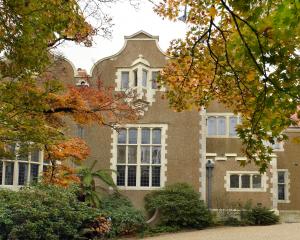International scientists co-led by a University of Otago researcher have sequenced the mitochondrial genome of an ancient Phoenician man, who once lived in Tunisia, in Northern Africa, and revealed surprising European links.
Prof Lisa Matisoo-Smith, of the Otago anatomy department, is recognised for her research using DNA analysis to trace patterns of ancient ancestral voyaging in the Pacific.
Prof Matisoo-Smith has now turned her skills to the Phoenician man, who has been dubbed the "Young Man of Byrsa'' or "Ariche'', whose tomb was discovered, partly by accident, within a hill in Carthage, near Tunisia's modern capital, Tunis, in 1994.
The man, believed aged between 19 and 24, had died in the 6th century BC, and was found after the excavation of the site of the cemetery of Byrsa, in ancient Carthage.
This research project involves the first ancient DNA to be obtained from Phoenician remains and is the first time the full mitochondrial genome of the "Young Man of Byrsa'' has been sequenced.
"We're pretty excited,'' she said, particularly about uncovering genetic links with Europe.
"The result was a big surprise.''
Genetic links with Africa itself, or with Lebanon, where the Phoenicians had previously lived had been more expected.
The team's analysis shows that the man belonged to a rare European haplogroup- a genetic group with a common ancestor - titled mitochondrial haplogroup U5b2cl, that likely linked his maternal ancestry to locations somewhere on the North Mediterranean coast, most probably on the Iberian Peninsula, where Portugal and Spain are located.
The findings are newly published in the international journal PLoS ONE.
Otago University's DNA sequencing facilities were "absolutely cutting-edge'', and her links with Lebanese and other researchers were proving crucial in this "collaborative project''.
High-quality facilities at the university's ancient DNA laboratory were playing a key role, and increasingly powerful and sensitive equipment was enabling richer information to be gleaned from small bone samples.
Prof Matisoo-Smith said the findings provided the earliest evidence of the European mitochondrial haplogroup U5b2cl in North Africa and date its arrival to at least the late sixth century BC.
The analysis showed that Ariches' mitochondrial genetic make-up most closely matched that of a particular modern-day individual from Portugal, she said.
The influence of the Phoenicians expanded across the Mediterranean and west to the Iberian Peninsula where they established settlements and trading posts.
Little was now known about the Phoenicians themselves, but hopefully these findings and continuing research would "cast further light'' on them and their origins, she said.












